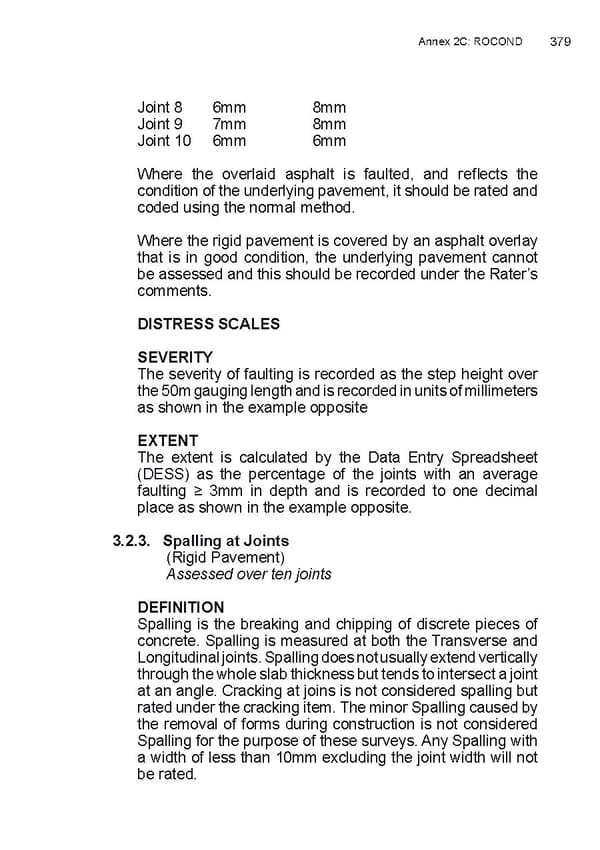Annex 2C: ROCOND 379 Joint 8 6mm 8mm Joint 9 7mm 8mm Joint 10 6mm 6mm Where the overlaid asphalt is faulted, and reflects the condition of the underlying pavement, it should be rated and coded using the normal method. Where the rigid pavement is covered by an asphalt overlay that is in good condition, the underlying pavement cannot be assessed and this should be recorded under the Rater’s comments. DISTRESS SCALES SEVERITY The severity of faulting is recorded as the step height over the 50m gauging length and is recorded in units of millimeters as shown in the example opposite EXTENT The extent is calculated by the Data Entry Spreadsheet (DESS) as the percentage of the joints with an average faulting ≥ 3mm in depth and is recorded to one decimal place as shown in the example opposite. 3.2.3. Spalling at Joints (Rigid Pavement) Assessed over ten joints DEFINITION Spalling is the breaking and chipping of discrete pieces of concrete. Spalling is measured at both the Transverse and Longitudinal joints. Spalling does not usually extend vertically through the whole slab thickness but tends to intersect a joint at an angle. Cracking at joins is not considered spalling but rated under the cracking item. The minor Spalling caused by the removal of forms during construction is not considered Spalling for the purpose of these surveys. Any Spalling with a width of less than 10mm excluding the joint width will not be rated.
 Local Road Management Manual Page 379 Page 381
Local Road Management Manual Page 379 Page 381